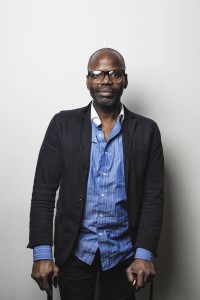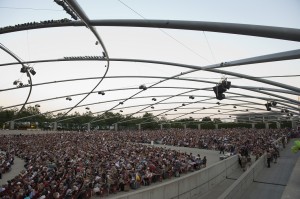Diversity seems to be the word on everyone’s lips these days. Shirley Mordine, director of Mordine & Co., spoke about the need to diversify by asking other companies to perform with her company at last week’s performances. Numerous small companies across Chicago are sharing shows with other artists in alternative spaces in increasing frequency. Rumors have the Dance Center of Columbia College looking to diversify their academic programming to include a broader spectrum of styles including African and hip hop. Local dance service organization Audience Architects held several convenings gathering artists opinions and data on diversity of dance in Chicago. And then there is the Chicago Cultural Plan – the big daddy study on arts and diversity in the Windy City.
But it was a conversation with Audience Architects Executive Director Heather Hartley and artist/teacher/consultant Baraka de Soleil that sparked the idea for a new, six-part series called Moving Dialogs: Diversity + Dance. de Soleil said the community convenings came out of the fact that local artists who attended the 2012 Dance/USA conference weren’t satisfied with the conversation about diversity. “We were either trying to be too nice or it was being diluted,” he said. “There are things we didn’t want to talk about. It’s very challenging. Through the genius of Audience Architects, bridging the conversations between audiences and those who construct the work is a wonderful way to begin to make the conversation larger.” The free series opens this Sunday, March 10 with Diversity: Then/Now at the Old Town School of Folk Music.
de Soleil, who grew up on the South Side and has performed as an interdisciplinary artist in Minnesota, San Francisco and New York, will be the curator for the entire series. The inaugural Spring Series will focus on Chicago’s history and the current cultural climate of the local and national dance scene. A panel of artists – Alvin Ailey American Dance Theatre‘s artistic director Robert Battle, Columbia College chair Onye Ozuzu, dance critic Lucia Mauro, dance education director for Old Town School Sarah Dandelles, Cerqua Rivera artistic director Wilfredo Rivera, DanceWorks Chicago artistic director Julie Nakagawa and emerging artists NIC K and Dorian Rhea – will participate in the discussion, bringing their expertise to the table.
I spoke with de Soleil over the phone last week about Moving Dialogs and the opening series.
How did you decide who would be on the panel?
Timelines, relevance and cultivating relationships. The people who are a part of this opening forum are people I’ve had time to get to know and have conversations and hear where they’re at. This came out of conversations, not necessarily about diversity, but what are the ways we can come together and strategize. The representation of emerging artists is important. They’re beginning to think about ways of diverstiy that are multi-layered. They’re just doing it. They aren’t talking about it. We need to hear these voices and they’ll teach us something. It’s important that the experience is somewhat multi-generational, but that it’s a coalition of the multiple voices, multiple ages and multiple experiences all looking towards discovering this language about how we can think and break open the notion of diversity. It was synergy. It was timing. It was relevance.
What kind of information are you hoping to get and what will you do with that information?
We want to begin to discover, as a community, the best language that supports moving this conversation about diversity along and that it moves us beyond the notion of diversity as a deficit, as something marginalized, as something now that has been relegated to our legacies. We need something to move us out of that place and that there is a co-existence of these diverse thoughts. It’s a big challenge. Above and beyond just representation of having different people in the room is the line their diverse and distinctive bodies to co-exist and to speak from that place of co-existence. You can be there and I can be there. We can both have our opinions, but a new language that allows us to both be there. This first one is an inroads of how we can begin to talk about diversity. It’s not attainable; it’s already there. We’re just beginning to name it and allow it to co-exist and to allow the diverse voices to co-exist in a new way that everyone can share and be their true selves, adding to the conversation. Who is in the room will inform the conversation. I have a legacy and a past that reflects who I am culturally. I’m going to allow myself to be deeply present in this moment and ask others to be deeply present in themselves and that is what is going to inform it. There is this conversation, but there will be iterations that move it and propel it forward, so we won’t be stuck in this conversation.
Read more about Moving Dialogs with a Moving Reflections blog entry by Hubbard Street Communications Manager Zac Whittenburg.
Moving Dialogs Diversity: Then/Now, Sunday, March 10 from 6:30-8 pm at the Old Town School of Folk Music, 4545 N. Lincoln Ave in the Myron R. Szold Music and Dance Hall. Admission is free. RSVP IS REQUIRED.


